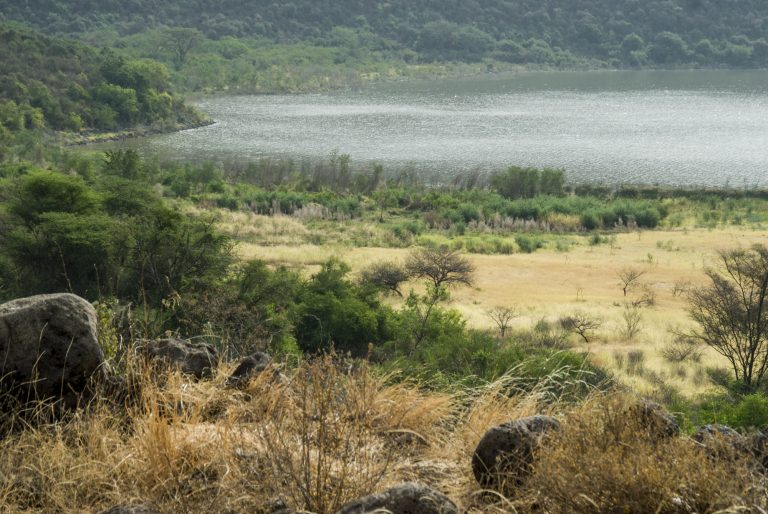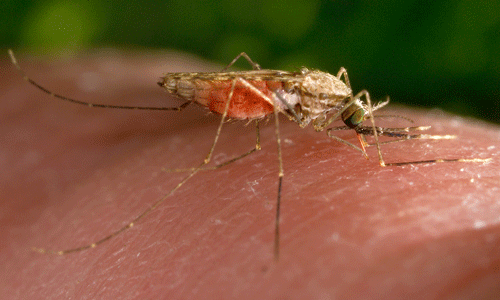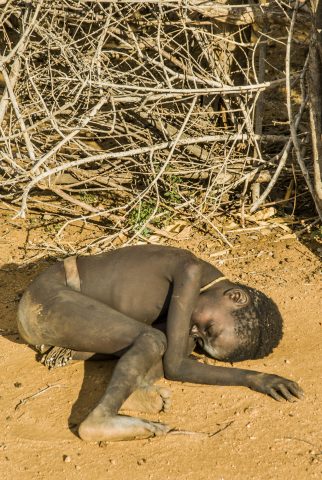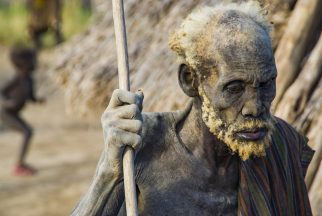Malaria, Mosquitos, Water
Omo River Basin
|
NEW ESRI StoryMaps: What's On Our Shelves & NWNL Song Library & No Water No Life ESRI |
Omo River Basin
Dereje Tesfahune
Vice Dean of Water Technology Institute, Addis Ababa University, Arba Minch
Alison M. Jones
NWNL Director and Photographer
All images © Alison M. Jones, unless otherwise noted. All rights reserved.
After a NWNL Omo River Expedition in Ethiopia, Alison Jones visited Arba Minch 1) to interview Water Technology Institute [WTI] scientists focused on Ethiopia’s water resources and hydrologic projects; and to discuss her 100-page Proposed Management Plan for Nech Sar National Park (16 MB PDF or 4 MB PDF) with the current manager of that park.
This interview highlights scientific efforts to reduce malaria by addressing how water availability allows breeding by malaria-bearing mosquitos. Malaria is a scourge that affects human health, and consequently local and national economies. According to WHO research, “Almost 45 million of Ethiopia’s 68 million inhabitants are estimated to be at risk of malaria…. In Ethiopia, altitude and climate (rainfall and temperature) are the most important determinants of malaria transmission.” 1 This interface between water and malaria applies to both the Omo and Blue Nile River Basins in Ethiopia, since only highland areas above 8,000 feet [2,500 m] are free of malaria.
1 “World Health Organization: African Region, Ethiopia” https://www.who.int/countries/eth/areas/cds/malaria/en/ Accessed Feb 3, 2020.
NWNL Africa’s visitors and African residents are well aware of malaria – but may not know that still waters are breeding sites for malaria-bearing mosquitos. Thank you Dereje, for making time to discuss your approach to reducing malaria by going to its source – water. What is your background in trying to end this disease that kills children and disables adults?
DEREJE TESFAHUN Hello! I’ve worked and lectured for the past 4½ years as Vice Dean of the Water Technology Institute at the Addis Ababa University in Arba Minch. As well, I’m currently associated with the University of Bergen in Norway. My profession is in hydrologic engineering and my MAC in Hydrologic Water Resource Management. For the past ten years, I worked with the government designing water-resource structures for dams and irrigation systems.
Currently, I’m researching and writing on malaria/climate relationships. Six of us are jointly working on Ethiopia Malaria-Prediction System [EMAPS], which is establishing the components for malaria’s distribution and transmission.

NWNL How do you divide the research for this project amongst you?
DEREJE TESFAHUN Some of us are studying climatic viability for malarial areas. Others are focused on epidemiology, trying to enumerate infected hosts and focus on origins of this disease. A colleague studies erosion. Another is trying to model atmospheric dynamics – specifically, the annual percentage of rainfall is contributed to Ethiopia from the Indian and Pacific Oceans and the Mediterranean Sea.
My research in this project is on water availability and hydrological modeling so we can trace water availability and its physical distribution for our study areas.
NWNL Is the Intertropical Convergence Zone [ITCZ] part of that study?
DEREJE TESFAHUN Yes. So, this project with which I’m currently involved is integrated research.Together we’re trying to integrate and model all these systems for a national methodology showing the interface of malaria with climate, water availability (from my side), epidemiology and the infected hosts.
NWNL Part of my interest in your work is personal, having returned to the US with malaria last October after visiting the Omo Valley. Fortunately, easy access to doctors and medicine in the US ensured an easy recovery. From my NWNL point of view, I’m interested in the connection between water availability and health as a critical watershed issue. Where are you studying these issues?
DEREJE TESFAHUN We are now studying the Lake Ziway catchment area. Senior researchers selected this location due to its high level of malaria transmission. It is the worst malaria area in Ethiopia. [Editor’s Note: Lake Ziway is northeast of Arba Minch, west of Bale Mountains and south of Addis Ababa. It is within Ethiopia’s chain of Rift Valley lakes.]

NWNL Do your studies apply to malaria in NWNL’s two case study watersheds: the Omo River Basin and the Blue Nile River Basin?
DEREJE TESFAHUN Yes, by having Lake Ziway as a typical study area, we can calibrate different parameters regarding water availability and then can compute each established water availability concept for a number of different parameters. Once we set those parameters, it is possible to adopt our results for the other regions.
This transference is possible with EMAPS, since it’s a model setting a prediction system for a given study area. It also allows the use of different parameters in the model for other regions in Ethiopia and for East Africa. I haven’t yet seen this concept in malaria prediction elsewhere.
NWNL How does water become one of the aspects of your malaria prediction studies?
DEREJE TESFAHUN This project joins climate variability and natural epidemiological research with malaria prediction systems. In this study, water availability is quite a special topic and really important, whatever the climate availability and transmission area of the breeding system.
Models of the water availability will show how much water is there and how it creates favorable conditions for breeding mosquitoes. This is a major element. Once we know the availability of moisture, it is very simple to predict the likelihood of malaria and the like. This is a new concept, and I am so interested being involved with this research.
NWNL What do you expect the results of this project to be? What will they indicate?
DEREJE TESFAHUN In our case, I have simply stated the water availability at each grade point. This is my part; but is a very big task. First, I have to scan the area. After scanning the area, I adopt a model for computing water availability at each point.
Secondly, I provide that water availability to Ph. D. candidates trying to relate the water availability to their objectives. They will study different options for breeding mosquitoes with water availability and climate with regard to the malaria incidents. Then, they investigate regions where there is a high moisture content for the possibility of breeding malaria.

NWNL What have you found in the four years you’ve been working on this?
DEREJE TESFAHUN I wrote, defended and presented my proposal as of August 2007. They accepted it and released funds.
NWNL It seems that you know that during the rains, malaria cases will increase. So, what steps do you recommend that will reduce malaria incidence?
DEREJE TESFAHUN My job is to designate the appropriate catchments for water bodies with pasture lands and establish different land codes. (We don’t consider cultivated lands or forest areas.) Then, we analyze the area’s water availability. Once we ascertain the water availability and relate that to malaria breeding systems, then we can provide special treatment in those areas with high moisture and thus high malaria breeding.
Where there is high malaria breeding, we can actually deliver an early warning system. That should especially occur where irrigation is practiced, as malaria will definitely be there. With very-high malaria breeding areas, we have various mandated measures for alleviating such serious cases. These situations are quite similar to that of HIV victims.
NWNL How widespread is malaria in Ethiopia? Once your study is complete, how will Ethiopia use this research to help prevent malaria?
DEREJE TESFAHUN Malaria is a very big problem in our country. Many children have died due to the problem of malaria. Even in the highlands, malaria is common nowadays. Malaria has been common in the lowlands; but today highlanders are also susceptive to cases of malaria. This is a very serious problem. So, we have to explain that if Ethiopia does not control mosquito breeding, then it will spread to the other part of the regions.
NWNL Your analysis of water problems can predict a high incidence of malaria. What can alleviate the problem? Since governmental distributions of malaria nets and pills are problematic, do you recommend regulations for removing or covering water where mosquitos breed?

DEREJE TESFAHUN Actually, we each have different approaches and outputs. Epidemiologists have their own outcome. For instance, they provide appropriate measures for malarial cases once victims are identified. But my job is to analyze water availability for a given region. Then if there were open water surfaces, we’d recommend to the government a methodology for eradicating the breeding system there.
Likewise, we can request improved water management in cases where there is none, or it is poor. Exercising proper water management can alleviate a possible malaria-breeding system. You see, epidemiologists agree that integrated watershed management is the primary parameter for reducing the level of breeding mosquitos in areas known for transmission of malaria.
NWNL Thank you for your research and dedication to reducing the deadly and economic threats posed by mosquito-borne malaria. Best of luck!

Posted by NWNL on February 5, 2020.
Transcription edited and condensed for clarity by Alison M. Jones.
All images © Alison M. Jones, unless otherwise noted. All rights reserved.
